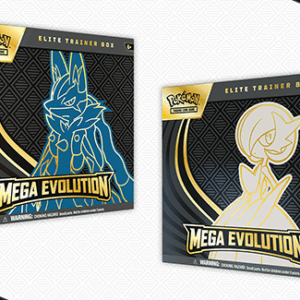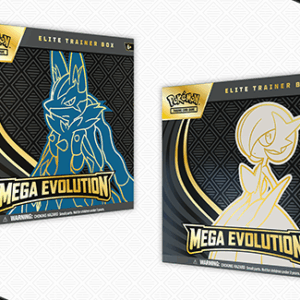In the ever-evolving galaxy of sports memorabilia, certain gravitational forces never lose their pull, and LeBron James’s 2003 Topps rookie card, affectionately known as #221, is the North Star of basketball card collecting. It serves as a nostalgic touchstone, skillfully bridging the gap between the classic paper Topps cards that once dominated the scene and the shimmering chrome iterations that arrived later. Ask any returning collector what they should aim for, and this is the card that surfaces, each time like clockwork.
While many may be drawn toward the shinier, scarcer LeBron rookie cards, this Topps base card is the true cornerstone of the collection. It exudes a certain affable charm and accessibility, inviting collectors both new and weathered to indulge in a pursuit that feels feasible across varying grades. Yet, despite its reasonable supply, there’s a palpable demand, ensuring that pristine versions never linger too long in the market.
Recent data paints a telling picture of its steady allure. As of mid-August 2025, the marketplace, most notably eBay auctions, witnessed PSA 10 versions of this card consistently settling around the $2,000 to $2,100 range. Specific instances underscored this trend: August 6 saw a bid closing at $2,000, with increments visible on August 9 ($2,050) and August 13 ($2,076), culminating in an auction on August 18 that hammered at $2,175. Such figures provide a neat little comp band that’s rare to find in a card with such visibility.
In the grander scheme, the stability of this card’s value is unwavering. A sale recorded in late August by Card Ladder at $2,531 for a PSA 10 slightly exceeded its usual eBay climax, aligning with a gradual upward trend that’s been as gentle as a summer breeze since spring. There’s no radical volatility here—just consistent, dependable activity backed by substantial volume.
Yet, the Topps saga doesn’t just end at its base version. The 2003 Topps family expands into intriguing realms with its Black Border parallel limited to 500, a Gold variant capped at 99, and the First Edition stamp, which satisfies the craving for scarcity without veering into the exclusive world of serial numbers. Each offers a distinctive flavor, contributing to price charts and checklists across forums and guides.
Moreover, we encounter the Topps Collection photo variation from the factory set, a quirky relative donning a different image and occupying a more diminutive niche. While it often trails the base card in gem mint condition, it provides a playful deviation for set builders adhering to the flagship path.
Grading significantly affects the narrative of this card. The PSA 10 population’s health brings it an aura akin to a robust blue-chip stock rather than a ghost of the hobby, despite the noticeable spread in both financial and psychological impacts between PSA 9 and PSA 10 grades. If you’re tipping your toes back into collecting, raw cards typically maintain a position in the $250–$300 bracket, while PSA 9s hover somewhere in the $400s. Variance in raw card prices hinges on centering and surface quality, subtly emphasizing the importance of clear photos and sterling seller feedback—emotion tends to take a backseat to excitement here.
A strategic playbook exists for those with a keen eye on comps this month. Keep an eye on evening eBay auctions for PSA 10s, where you should expect transactions to settle close to the $2,000 to $2,100 mark. Occasionally, you’ll witness surprising leaps when two passionate bidders enter a staring contest over their keyboards, neither willing to blink. This card is an essential study for price action enthusiasts, given its deep liquidity and constant observation from collectors.
The paper versus chrome discussion for this rookie class is ceaseless. Chrome refractors strut around like the peacocks they are, exuding flash and charisma. However, the paper Topps base is the version that found a comfortable home in binders and starter packs, becoming a poignant retail memory for anyone dabbling in cards during the hectic mid-2000s. While you don’t have to pick sides, should you lean toward one, the paper Topps card narrates a longer, richer story of a hobby transitioning from one era to another.
Centering often emerges as a focal quirk; the card’s white borders let any minor deviation manifest glaringly. If even the slightest fault sends ripples of discomfort, thus crisp corners and pristine edges carry considerable weight. A spot-on PSA 10 defies expectation, resulting in a jolt of excitement as your mind registers a card that truly earned each grading point it displays.
Fortunately, accessibility comes in many forms. A strong PSA 9 can deliver that flagship look at half the cost of a PSA 10, retaining a degree of liquidity that makes parting with it later far from heart-wrenching. Seeking out and grading well-centered raw cards offers a rewarding project for collectors invested in longer game strategies. Meanwhile, the First Edition stamp intrigues those leaning into scarcity without incurring the costs of the Black and Gold premium routes.
If stories of rare pulls fascinate you, you’re in luck. It’s still possible to unearth LeBron’s 2003 Topps cards from the wild in our Galaxy Rip Packs. These aren’t simply exercises in wishful thinking—the packs are designed for bona fide chase moments, rotating through collectible pools that keep the thrill alive every time you open one.
Now, writing in 2025, the card’s case stands firmly rooted in truth rather than hype. A simple glance at the checklist, scrutinizing recent bids, and considering how this card captivates a diverse group of collectors paints an irrefutable picture: the 2003 Topps LeBron James rookie card remains a steadfast choice. As you contemplate its acquisition—whether stowing it away as a long-term hedge, trading into one through several shows, or attempting discovery through ripping packs—you’ll relish the sense of finding a steadfast foundation in your collection. Then again, should your journey lead you toward its esteemed siblings—the numbered Black and Gold editions or the First Edition variation—you’ll still orbit the same profound force that ensconces the hobby in its timeless embrace.






